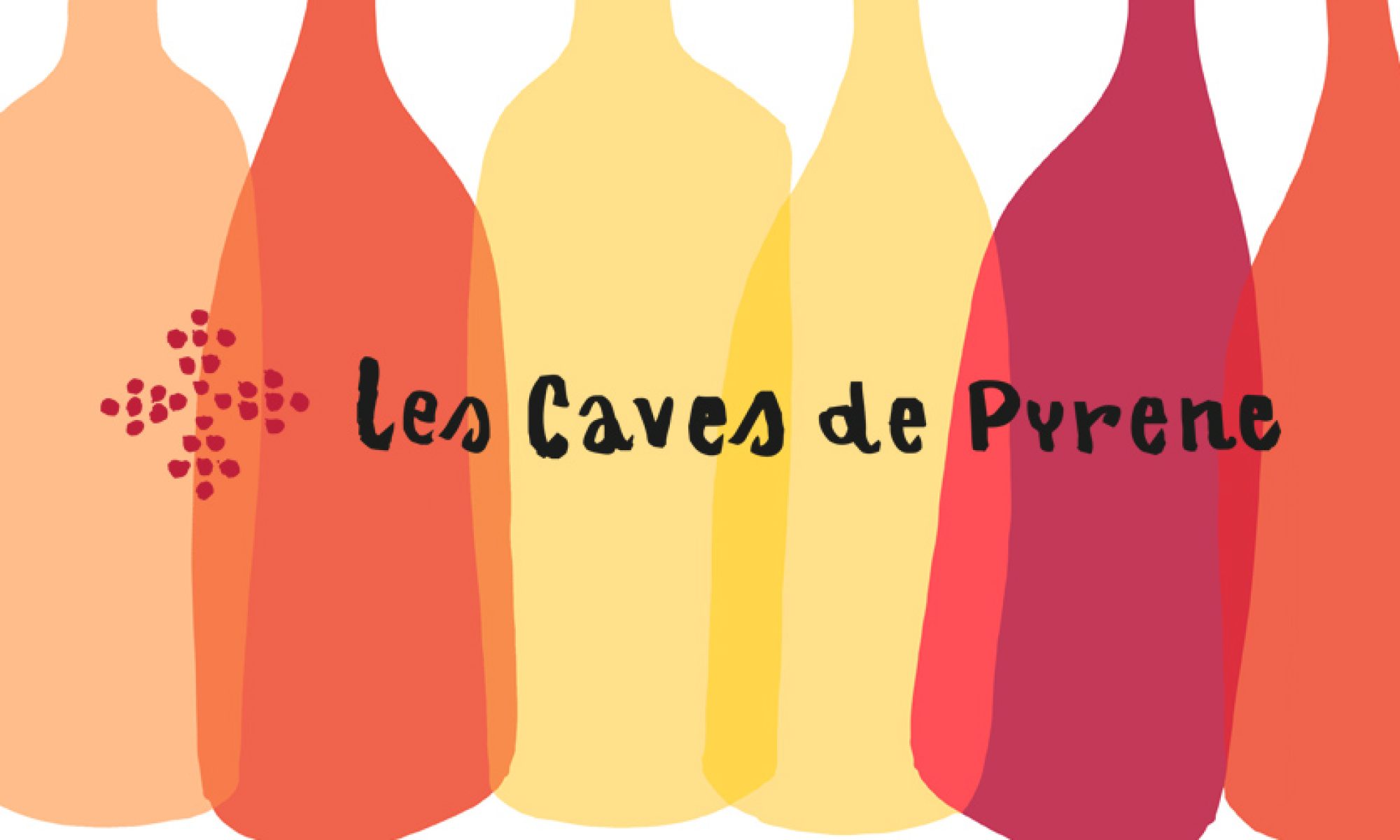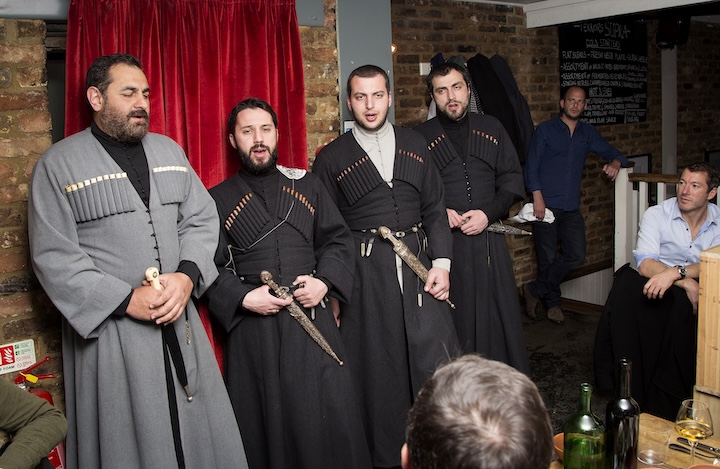Popular singing has a highly valued place in Georgian culture. Polyphonic singing, in the Georgian language, is a secular tradition in a country whose language and culture have often been oppressed by invaders. There are three types of polyphony in Georgia: complex polyphony, which is common in Svaneti; polyphonic dialogue over a bass background, prevalent in the Kakheti region in Eastern Georgia; and contrasted polyphony with three partially improvised sung parts, characteristic of western Georgia. The Chakrulo song, which is sung at ceremonies and festivals and belongs to the first category, is distinguished by its use of metaphor and its yodel, the krimanchuli and a “cockerel’s crow”, performed by a male falsetto singer. Some of these songs are linked to the cult of the grapevine and many date back to the eighth century.
Many wines are blends of disparate grape varieties which come together as one in the final wine. Nowhere is more evident than in the Pheasant’s Tears Poliphonia
To the untrained ear, polyphonic folk singing may sound strangely discordant. But then so might the monophonic unaccompanied Gregorian chant whose repetitions often induce a meditative, even trance-like state. In polyphony, because it is technically different, one might initially search in vain for modern melodies and mellifluousness, but soon the overall sound becomes the seamless amalgam of the different voices, and one begins to anticipate the intervals and slide into the internal rhythm of the song.

Many wines are blends of disparate grape varieties (or vineyards, or terroirs) which come together as one in the final wine. Nowhere is more evident than in the Pheasant’s Tears Poliphonia which contains perhaps 117 different Georgian varieties with a further 40 yet to be identified. When harvested, the grapes are a melange of different colours; their skins may be green, yellow, gold, orange, purple, rose-hued. All are straight pressed regardless and go into the final mix. The visual result is an appealingly orange/pinkish hazy wine with a delicious unique flavour identity.
Poliphonia is one (extreme) example of the so-called field blend, often red and white grape varieties planted together, harvested together and fermented together. A kind of wine harmony emerges, something greater than the sum of the discrete parts, at the same time nuanced in that it honours those different elements. Just like when the different voices come together (in one’s perception) to create the polyphonic song.
Thus Poliphonia can be seen as unity forged out of apparent chaos with the difference between all these many and varied grapes washing into the wholesome whole.
Its name is emblematic of a greater truth. Living in a city like London, one may witness the rich variety that people from different cultures give to the city, bringing their stories, their language, their art, their music and their culinary traditions with them from other countries. Each individual adds something different to the colour palette. In the end, we are a mixture of our genetic origins and our specific traditions but have the opportunity to absorb those of others and renew our worldview in the process. Those who complain about cultural dilution ignore thousands of years of our history of inclusiveness, wherein individuals from all over the world have come to work and live and contribute to the energy of this great city.
Poliphonia, the wine, is a valuable archive of many forgotten grape varieties. As a wine with colour (and yet without a definable colour), with flavours (yet without a single obvious one to pin down), it conveys the shifting tonal notes and subtle energetic inflections of a multi (multi) blend. Such a wine reminds us that life can be more complex than black or white (or, in wine terms, red and white or even red, white and/or orange!), and that the real truth of the matter is what we receive as part of our experience and how we perceive it. Suddenly, the different seemingly discordant voices come together, and the song is heard.
Sitting down at Georgian supra the other day, at a table laden with lovingly crafted dishes vibrating with colour and diverse ingredients, the orange (for want of a better descriptive colour) wine glinting in the glass, I felt that this wine, diversity incarnate, at this moment, was specifically designed for the food and the different guests each with their unique experiences. As if the wine symbolised the social bonding that occurs when friends – and indeed strangers – sit down together around a table, the time when individuals become as one family.

At Les Caves de Pyrene, we were one of the first companies to explore Georgia’s rich wine culture. We began to ship a handful of wines from this country in 2011, and now work with no fewer than 17 producers and nearly fifty wines. Over the years, we have hosted numerous supras (banquets) and held trade tastings focused exclusively on these wines. We hold Georgia and her artisan winemakers in deep regard. Read more about Georgian wine here, and about the famed Georgian supra here.
*
Interested in finding out more about the nearly 50 Georgian wines we bring in? Contact us directly:
shop@lescaves.co.uk | sales@lescaves.co.uk | 01483 538820


